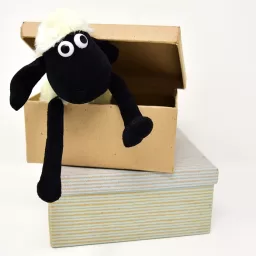The term “white balance” originates from the world of video imaging where a device (waveform monitor) was used to match or “balance” the signals from the camera’s red, green, and blue channels to make accurate whites under various lighting conditions, thus balancing your white. In this article, we’ll use “white balance” for digital cameras in a similar sense: the process of measuring your light source’s colour temperature accurately, based on your lighting conditions, and using that information to correctly balance your whites and colours.
Symptoms of poorly set white balance
If your camera’s white balance is set incorrectly, or if your camera chose the wrong algorithm for measuring colour temperature, then you will observe a colour cast on your image: it will either look slightly blue, slightly orange, or slightly green. A low colour temperature shifts light toward the red; a high colour temperature shifts light toward the blue. Different light sources emit light at different colour temperatures, and thus the colour cast. Let’s take a look.
What is colour temperature and how is it measured?
Colour temperature is effectively the warmth that is emitted from a light source, and the effect that temperature has on the intensity of any particular colour in the visible spectrum. For example, a 200 W bulb has more intensity in the orange/red end, and shows purples and blues with very little intensity. This makes your photo appear “warm”. Daylight has equivalent intensity across the whole spectrum, so you see purples and blues with the same intensity as oranges and reds. But shade or a heavily overcast sky has more intensity in the blue/purple end, so your oranges and reds will have very little intensity. This makes your photo appear “cool”.
Here are some examples of colour temperatures from common light sources:
1500 K: candle light
2800 K: 60 W bulb
3200 K: sunrise and sunset (will be affected by smog)
3400 K: tungsten lamp (ordinary household bulb)
4000-5000 K: cool white fluorescent bulbs
5200 K: bright midday sun
5600 K: electronic photo flash.
6500 K: heavily overcast sky
10000-15000 K: deep blue clear sky
Newer light sources, such as fluorescent and other artificial lighting, require further white balance adjustments since they can make your photos appear either green or magenta.
How does a digital camera auto-detect white balance?
Your camera searches for a reference point in your scene that represents white. It will then calculate all the other colours based on this white point and the known colour spectrum. The data measured from its R G B sensors is then run through a whole lot of numbers and predetermined equations to figure out which white balance setting is most likely to be correct. Remember, white balance is the automatic adjustment that makes sure the white colour humans observe will also appear white in the image.
Setting your camera’s white balance to AWB will provide colour accuracy under many conditions. Your camera will adjust the white balance between 4000K – 7000K using a best guess algorithm. Auto white balance is a good choice for situations where the light changes over time and speed is an issue (e.g. animal photography, sports photography). However, you should avoid using auto white balance settings in the following situations:
1) Your scene is heavily dominated by one colour
2) Colour accuracy is absolutely imperative
3) You are photographing particularly warm or cool scenes (e.g. a sunset)
White Balance Presets
Most digital cameras come with multiple white balance preset options. These presets work well when:
1) The light source matches one of the preset white balance options
2) Your scene is heavily dominated by one colour
Let’s review the most common preset options:
Tungsten – “Tungsten” is the name of the metal out of which the bulb’s filament is made. The color temperature of this setting is fixed at 3,000K. Best Use: indoors at night. Otherwise, your exposure will turn out too blue. Creative Use: Set your exposure compensation to -1 or -2 and use this setting in daylight to simulate night.
Fluorescent – The color temperature of this setting is fixed at 4,200K. Best use: Fluorescent, mercury, HMI and metal halide lights used in your garage, sports stadiums and parking lots. Otherwise, your exposure will turn out too purple.
Daylight – The color temperature of this setting is fixed at 5,200K. Best use: studio strobe lights. Otherwise, your exposure may have a slight bluish tinge.
Cloudy – The color temperature of this setting is fixed at 6,000K. Best use: direct sunlight and overcast light. This setting will warm your photo by giving it an orange tinge, which is often desirable in landscapes and portraits. Creative Use: sunsets.
Shade – The color temperature of this setting ranges from 7,000K – 8,000K. Best use: shooting in shade, no direct sunlight (cloudy), backlit subjects. Otherwise, your exposure will turn out too orange. Creative Use: direct sunlight – it will warm up your photos even more!
Flash – The color temperature of this setting is fixed at 5,400K. This is almost identical to Cloudy but sometimes redder depending on the camera. Best use: overcast skies. Otherwise, your exposure will turn out too red.



